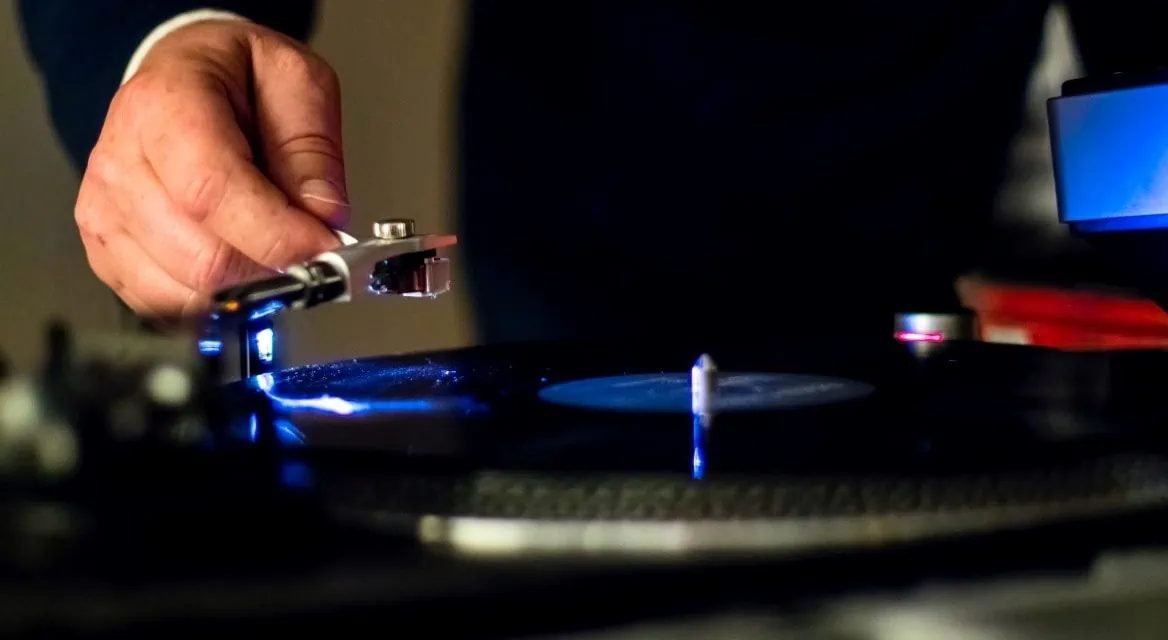Uh oh!
You’ve gone through all the work: you’ve picked your favorite albums, bought them in vinyl, bought a turntable and waited for it to come in the mail … and now you’re playing it. Only problem is, the darned thing won’t work!
First off, don’t freak out. While understandably frustrating, this is a common problem with Victrola and Crosley turntables. Their most common problem is skipping records – but seemingly “dead” turntables are a close second.
The good news is that with increased frequency comes increased strategies for solving the problems. Below, we look at the most common reasons why turntables won’t turn on, and their solutions.
Table of Contents
“Turn on Your Turntable:” Your Mission, Should You Choose to Accept It!
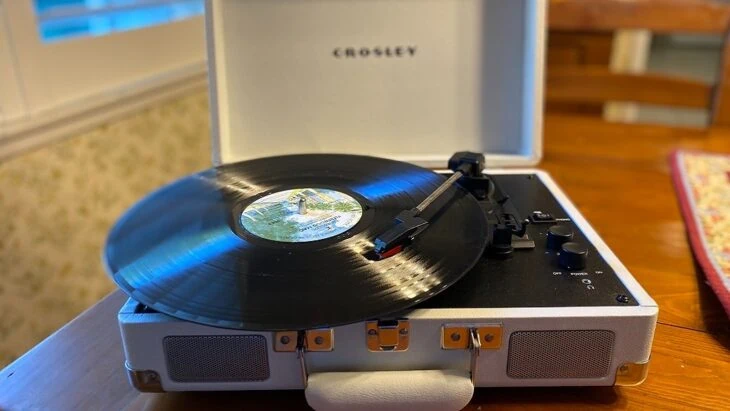
We all know that electronics are finicky things. In the case of analog technology like turntables, these chances increase, simply because there are more components that can go haywire.
However, most of the time, these problems are human error or simple fixes. There’s no shame there – we all make mistakes, and at the end of the day it simply means you have less work to do!
With that in mind, we begin our troubleshooting with easy fixes before advancing to more complicated ones. In all the situations, we’re acting as amateur electric and mechanical engineers – how exciting!!
First, we’ll check to see if there is a problem with the turntable’s source of power. We’ll do this first because nothing else will work if we don’t have power. Plus, it’s the easiest thing to check!
Second, we’ll check to see if there is a problem in the turntable itself. This could range from broken platters to worn-out belts. In terms of expertise, they range from dead-simple to rather involved.
It’s worth noting that while Crosleys and Victrolas are great starter turntables, their cheap designs and components will make them more prone to the following issues.
First Course of Action: Check the Power Source
As mentioned above, our first troubleshooting task focuses on the turntable’s power source. Some of these solutions are so simple that it might appear like we’re insulting your intelligence.
We promise we’re not!
We just want to make sure you have all your bases covered, and we all know anyone can have a bad day. I know I have! 🙂
Step 1: Is Your Wall Socket Dead?
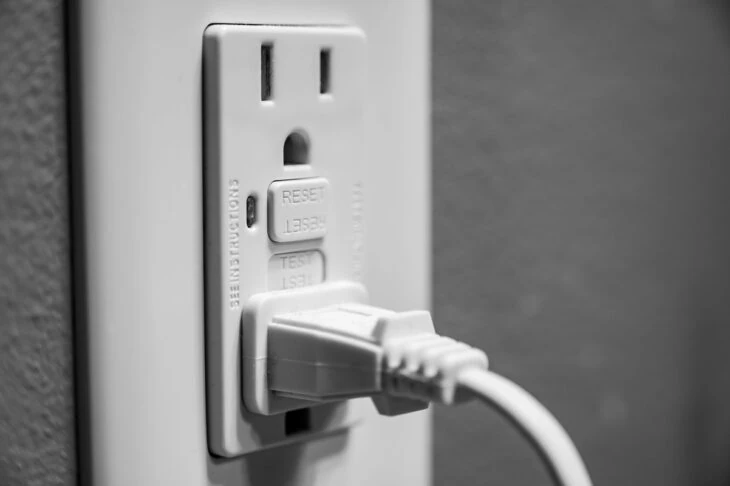
Before doing even the most mundane troubleshooting, you want to make sure your socket is working in the first place!
You’d be surprised at how many sockets don’t work in the average household. I have two that don’t work in my own townhouse.
Anyhow, it’s easy to check: simply get a lamp, or phone and charger … anything, really! … and see if it works with your socket of choice.
If it does work, you’ve narrowed your problem down to either a) your turntable’s power system, or b) the components inside your turntable. If it doesn’t work, just find another plug!
Step 2: Is It Plugged in?
Now that we’ve got the socket figured out, it’s time to move on to the painfully obvious.
Did you plug the power cord in? It’s so embarrassingly simple, but sometimes we don’t plug things in correctly.
Maybe you didn’t push the prongs into the socket far enough, or the cord isn’t pushed into the turntable far enough.
This should take about 3 seconds max. If your problem isn’t fixed, no problem, you didn’t break a sweat!
If it did fix your turntable, then yaaay, you just saved yourself an unnecessary headache!
I know, I know, another “DUH!” question. But nevertheless, still worth asking!
Got that done? Yaay! Whether or not you fixed the problem, you can hit your “THAT WAS EASY!” button!
Step 4: Is the DC Converter Compatible with Your Turntable?
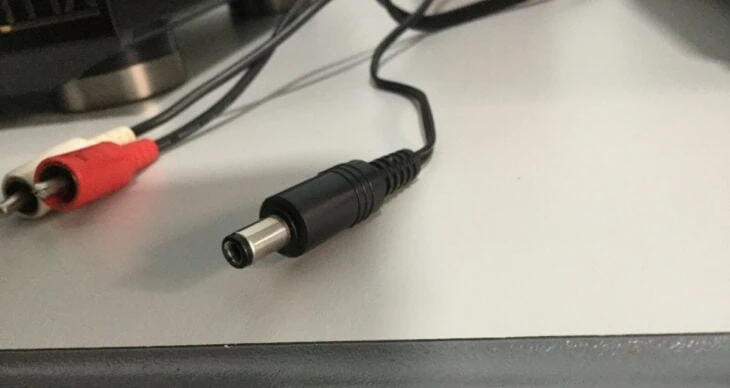
You know that little black box that’s part of your turntable and laptop chargers? It’s called a “DC converter.” It might be oddly shaped and annoying, but it actually has a very important job.
The wires in your walls transport electricity through “alternating currents” (AC), meaning that the electric currents can go back and forth through the wires and fluctuate in power.
Your devices, however, need “direct currents” (DC), which flow in one direction and keep steady power. In order for your computer to use your socket’s electricity, it needs the little black box to change AC power to DC power.
Here’s the thing though: different DC converters convert at different rates. These rates are measured in volts. If you use a DC converter that doesn’t match the voltage requirements of your turntable, it can ruin your turntable.
It is possible to use one power cord with multiple devices, given that it fits each device. You can do this, but only if you know that the DC converter is compatible with your turntable.
Given this information, check to make sure you’re using either a) the cord that came with the turntable, or b) a cord that is compatible with it.
How do you know it’s compatible? Easy – both will have the same number of volts (written with a number + V) written in their fine print.
Step 5: Is Your Fuse Blown?
Fuses act as a protective gateway between your devices and the wall sockets that provide them power. If too much power leaves the socket at any given point, it will overheat and “kill” the fuse instead of your precious device.
Many turntables include a built-in fuse, including the Victrola VSC-550BT, which is the most popular turntable for beginners. If your turntable still isn’t working, try checking the fuse.
You will need to refer to your manual to see where the fuse is located since it varies from model to model. It will look like a mix between a tiny battery and lightbulb – cylindrical with transparent sides.
If the fuse’s inside looks smokey and black and smells like burnt rubber, it’s broken. Problem solved! You’ll just need to find the correct replacement for your turntable model.
Second Course of Action: Fix the Turntable
If you’ve tried troubleshooting power sources and they don’t work, it’s time to get more involved. In this section, we’ll look at some strategies to fix broken turntable parts.
Step 6: Is Your Motor Jammed or Broken?
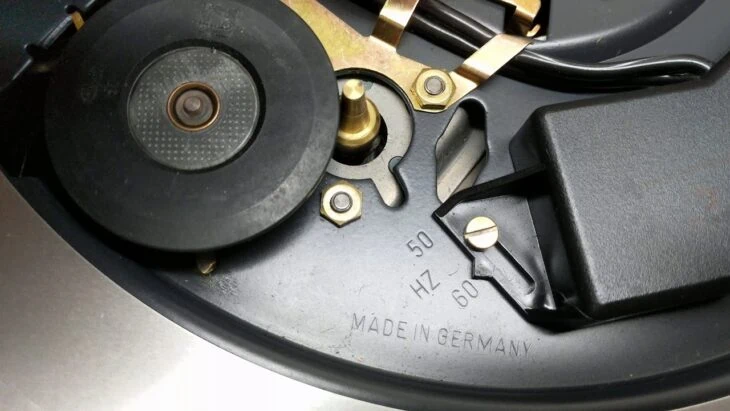
The motor is the little gizmo inside your turntable that provides the energy and motion to turn the disc. Think of it like your car’s engine.
Obviously, if your motor is dead, nothing’s going to spin. Likewise, if it’s jammed, there’s something preventing it from turning. Thankfully, there are some easy ways to check.
First, you’ll need to research where your motor is located. It should be pretty easy to locate since it’s often concealed under a big screw-on plate.
Once it’s uncovered, it’s time to do some investigating. Best case scenario, there’s dirt, grime, or some other culprit jamming it up. If that’s the case, just remove it!
Worst case scenario, if it’s covered in black debris or smells burnt, it’s slowly falling apart. You can carefully clean it out with a fine cloth or brush, then try it again.
Unfortunately, if it still doesn’t work, your motor is probably dead. While you could get it replaced, it’s probably better to buy a new turntable altogether (I’ll explain why later on).
Step 7: Is Your Belt Having a Bad Day?
The belt is the component of the turntable that actually spins the disc. The motor provides the energy, but the belt does all the grunt work.
However, not every turntable has a belt. Check your model specs before proceeding!
Turntable belts are made of rubber because it’s tight and grippy, providing plenty of friction for spinning. Unfortunately, this also means it can get stretched out or worn thin.
In order to fix the belt, you have to do a bit more work. First off, you need access it, which requires a few steps.
First, you’ll need to unscrew whatever is hiding the turntable’s inside. After that, you need to remove the platter, which is the circular disc you place your record on. You should be able to find the belt directly underneath.
Now to the fun stuff!
If the belt is really loose, you’ll boil it for 2 or 3 minutes. Most of the time heating things up melts and stretches them, but rubber is the exact opposite!
If the belt is too tight, stick it in room-temperature water for about a minute. Then leave it in a freezer for 3 or 4 hours. Weird, right?!
If the belt is too thin and worn out, you’re better off buying a new one. Crosley sells replacement belts, and you can find third-party ones that fit your table’s specifications.
Step 8: Is Your Platter Crooked?
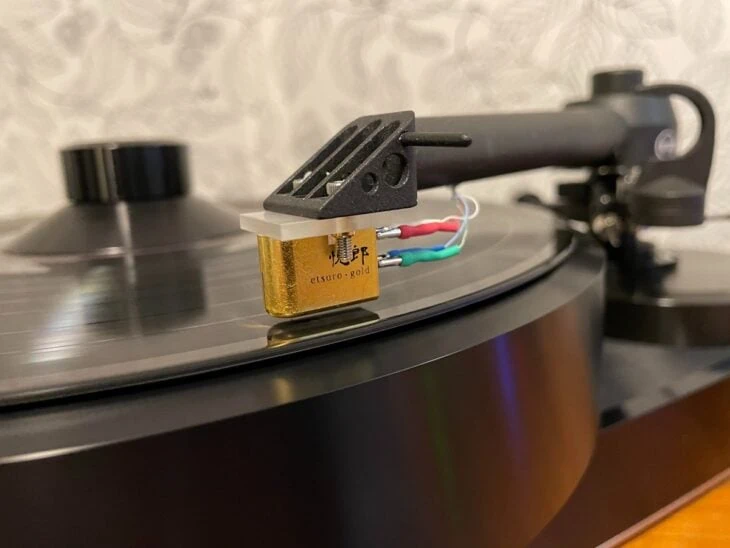
Remember the platter we just looked at in Step 7? There is a possibility it wasn’t put on your turntable correctly. It might’ve been placed crooked, or jammed on incorrectly.
Thankfully, this has an easy fix: just take it off and put it back on correctly!
If All Else Fails …
While the solutions above will work for many turntables, there is a chance that your turntable still won’t work after all that work. If this is the case, you should probably buy a new one.
While Crosley and Victrola turntables are great choices for beginning vinyl enthusiasts, here’s the truth: they are very cheap. If you’ve already enjoyed your records for several months, and want to fix your turntable, you clearly enjoy the hobby enough to continue.
That’s great! However, it also means that you might as well invest in a new turntable altogether.
Other companies, like Audio-Technica and Pro-Ject, make great models that are still in a relatively low-price range. Check out our article on the best budget-friendly turntables available right now!
Conclusion
There’s nothing worse than trying to play your favorite album on record, only to find your turntable won’t even turn on! Given all the electric and mechanical components of an analog setup, fixing it can seem daunting.
Hopefully, the 8 steps in this article helped you fix your turntable – or at the very least pointed you in the right direction. Either way, we hope you enjoy your journey into vinyl-land … and until next time, always, ALWAYS have fun!

